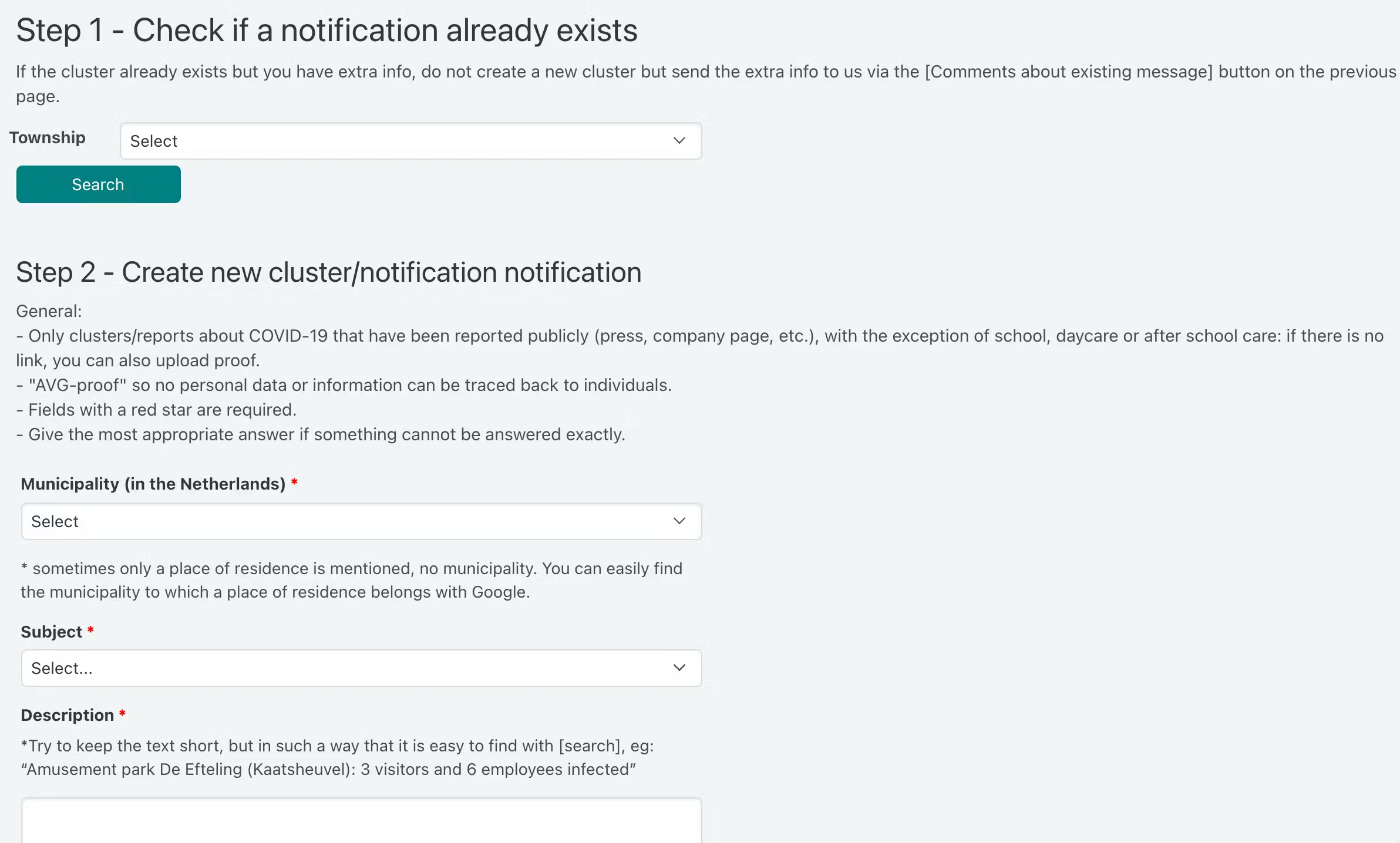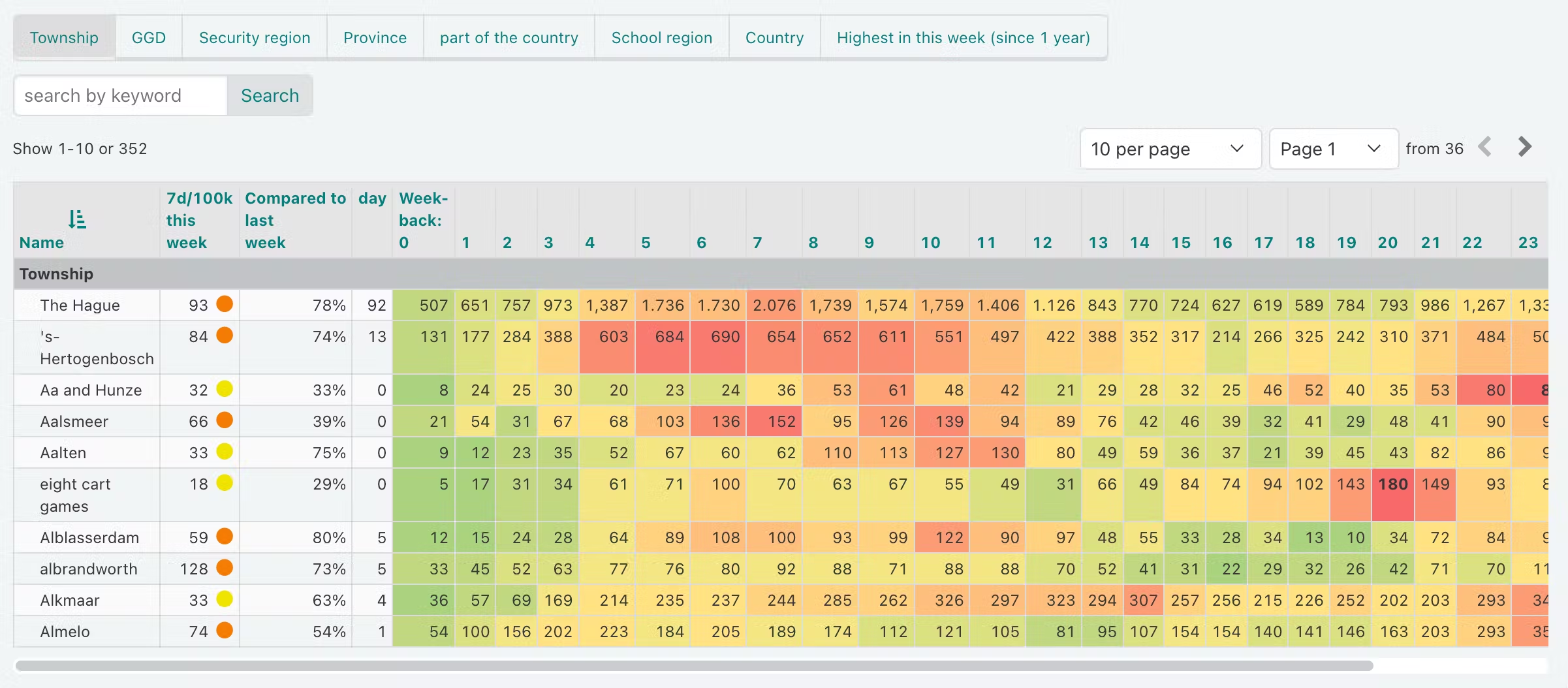Let the search begin
Bart Bolkestein was on the search for online database solutions for his Netherlands-based IT training and consultancy business called BD Dataplan. He consistently ran across issues with costly and complex solutions that did not allow him to structure the data the way he needed.
During his search, he discovered no-code development technology that would allow him to build entire apps without using code and thought If these no-code tools work, maybe I’ll go back to the system I built years ago for food safety management called BD Food to dive into that market once again.
He started looking at the options on the market for no-code and low-code development tools in order to build his online databases and found about 20 of them to compare features.
As a tech-savvy entrepreneur, he certainly had the know-how to create databases to fit his needs, but he did not want to spend too much time or money to invest in expensive and difficult tools.
So, he compared each of the no-code and low-code tools he found for differences in price, trustworthiness, and ease of use.
That’s where Knack came out on top.
The level of security and the pricing plan options with Knack were the best solution for what I needed because paying per user didn’t work for me.
From Test App to Game Changer
In 2020, business slowed a bit for Bart as it did for many of us across the globe in the middle of a pandemic. It gave him both the time and the focus to create a test app using his new Knack account.
Though Bart had assumed data on COVID-19 infections in the Netherlands was centrally located already, he began collecting information on locations of infection outbreaks and who it was that was becoming infected.
What he found was that the COVID-19 data was not structured and there was no useful data analysis or presentation. The data he found was so fragmented that he didn’t even know which data was up-to-date or reliable, making it impossible to determine which information was correct. So, he went to work structuring the data so he could play around with the app builder. He showed his app to a couple of friends who suggested he make it public because the data could be really useful to so many Dutch citizens.
He did as his friends suggested and went a step further creating a Twitter account to spread the word about his new app.
What started out as a quick and easy way to explore a new no-code tool, ended up being a useful COVID data aggregator, with thousands of followers receiving daily updates on where the coronavirus infections are occurring and to whom. By using Knack, Bart was able to structure and organize the data in an accurate and presentable manner while leveraging Twitter to keep followers apprised of the Coronavirus infection data through daily tweets.
“That’s the great thing about Knack,” stated Bart, “the user can filter and sort the data and easily look for the things you want to see. That makes it interactive.”
As the reach of his app grew and citizens were becoming more upon him for the data, he needed to take on some volunteers to help. Fortunately, a key feature of Knack is user roles, which enables individual role permissions for each. So, his volunteers started gathering data from other sources, verifying the data, and adding them to his app. Bart also wanted to add a form to the app that allows the general public to add information about any outbreaks in their communities, schools, or places of work that they are aware of. Achieved easily with Knack, he added the form and was able to begin having his team verify the data received and add it to the app.

Infection entry image
Before he knew it, he was informed that the German government was using his app to determine which areas of the Netherlands were safe to travel to and which were not. Previously, the only COVID-related data available for the Netherlands was organized by “safety region.” Since his data was structured and showed infection rates by province rather than safety region, it became the go-to dashboard to make decisions for travel restrictions. He also found himself on the media circuit with numerous interviews by television, print, and radio media wanting to understand what makes him tick.
Knack helped me make easy-to-understand stats for people and their communities. I get raw datasets and import them into Knack to present them in a reportable way.
“The Support Has Been Great”
Bart was extremely pleased with the support he received from Knack. However, he didn’t expect the level of support he received when he encountered a potential financial issue. Bart found that he needed to upgrade his account to include the vast amount of records his app required to keep up with the COVID-19 numbers.
As much as he wanted to, it didn’t make business sense to pay more into his Knack subscription for the public service app. So, he reached out to Knack Support, as he had done before and, lo and behold, Knack offered him the upgraded plan free-of-charge as part of the organization’s Coronavirus Response initiative offering free services for not-for-profit apps assisting in the COVID-19 response.
Finding the Knack product to be exceptional as-is, Bart originally planned to use it as it was offered right out of the box. However, since his COVID-19 data aggregator was so unique and had been given a financial boost by Knack, Bart decided to take advantage of the product’s low-code option and recently started working with a Python programmer to automate the updates to the app.
Using Python, the programmer will soon be able to extract the raw data and automate it using Knack’s API. Bart will subsequently be able to avoid having to make updates 7 days a week so he can focus on profitable areas of his business and presumably even take a day off, eventually.
Strength in Numbers
With Bart’s knowledge and interest in making coronavirus numbers more visible throughout the Netherlands and his decision to use Knack’s app builder to make it happen, he is making an impact throughout the nation.
One of the most striking representations on his website is a heat map that demonstrates the effects of both the outbreaks and, more recently, the vaccine distribution and administration. The data can be filtered by township, “Safety Region,” province, and more so visitors can find the exact information they need quickly and understand immediately if it is a region that has high numbers or low numbers.

Heatmap
He finds this particular table to be an excellent way to represent the data because it is comprehensive, intuitive, and valuable to his visitors. Each column has its own data that Bart ensures is updated daily.
“The numbers in this table are presented by Township. With a set of buttons, the user can change the presentation, even to regional divisions that most other dashboards do not present, like Province or School-districts” Bart explained.
The data that is added from the public and Bart’s volunteers shows outbreaks that are otherwise not noted by other unstructured websites. Once a member of the general public adds information via the submission form, his volunteers receive a notification to verify the information and approve it for inclusion with the other, previously verified, data. Bart is able to make this happen because of Knack’s propensity for turning static data into dynamic processes with workflow automation.
Rapid Enhancements
Bart was also able to use Knack’s features to add the ability to label outbreaks with specific strains of COVID-19. Since this addition did not require the help of a developer, he was able to do so quickly, within a few hours. He is often able to make rapid changes that result in substantial improvements. In fact, one of Bart’s Twitter followers was extremely pleased to find out that one of his suggestions was used and the change made quickly, leading him to tweet about his pure pleasure in being a part of the process.
For Knack’s part, being in a partnership with Bart as he collects and reports on such important information to his fellow Dutch citizens has been a privilege.
One of Knack’s strengths is its ability to address changes in data so they can be tracked quickly and easily.
The Future of BD Dataplan
One of the biggest differences Bart was able to see with Knack’s offering is the menu he created to show each of the different pages. For him, it was not only easy to create but was very helpful with navigation for his visitors as well. Bart considers the shallow learning curve to be one of the best features of Knack’s app builder and one that proved to breathe new life into BD Dataplan as it “accidentally” became a big part of COVID-19 infection tracking in the Netherlands.
“I’m not sure what the future holds for BD Dataplan,” stated Bart, “but, as long as there is a need, I’ll keep updating the data and keeping people informed.”
He reiterated how important it was for him to find Knack and be able to share his “practice app” without paying per user, making it possible to create the tool to help so many people.
And Knack is honored to be a part of the solution.


